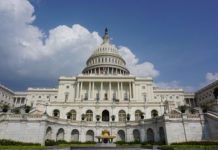On Wednesday, the Democratic presidential candidates had a debate in Miami. U.S. Senator Elizabeth Warren will no doubt bring up her pledge to eradicate student loan debt and make college tuition free. U.S. Senator Bernie Sanders has a similar platform.
But … in Florida it’s already free. Color me surprised, too, when I learned about this last year as my eldest was graduating from Marathon High School. The Florida Bright Futures Scholarship comes in four flavors — Florida Academic Scholars (FAS), Florida Medallion Scholars (FMS), Gold Seal Vocational Scholars and Gold Seal Cape Scholars.
The bulk of the recipients fall into the first two categories — Academic Scholars and Medallion Scholars. The requirements are based on three things — grade point average, standardized testing scores and community service hours:
- FAS: 3.5 weighted GPA or better, at least a 1290 on the SAT, and 100 hours of logged community service. The Academic scholarship covers the FULL cost of a credit hour in the state university system — $211, plus a small stipend.
- FMS: 3.0 weighted GPA or better, at least a 1170 on the SAT, and 75 hours of logged community service. The Medallion scholarship covers 75% of a credit hour — $158.
The state’s Bright Futures scholarships are funded by the Florida Lottery, dating back to 1997. According to the state, the Lottery has contributed more than $5 billion to send over 800,000 students to college since its inception.
To qualify for any of the Bright Futures scholarships, students must be a “B” student or better. According to the Bright Futures own statistics, just 22% of Florida high school students are eligible.
Does it cover everything? Nope. When it comes to attending college or university, there are tons of add-ons such as dorm fees, meal plans, books, technology fees, parking passes, athletic fees, buses, etc.
There are many requirements, of course, for KEEPING the Bright Futures scholarships like taking enough course hours and maintaining a B grade point average.
The edibility and funding for the program lies in the hands of elected politicians, a.k.a. state legislators. This year, legislators made the Bright Future standards higher for students graduating in 2021 and beyond. The new SAT requirements have been upped to 1330 and 1200 for the Academic and Medallion scholarships, respectively.
In 2019, as there were last time SAT requirements were raised in 2011, there are concerns that students of color are disproportionately affected. A more likely explanation, however, is two fold — changes to the SAT in 2016 that changed penalties for wrong answers and resulted in rising scores nationwide. And, probably much more important at the local level — the 10% increase in students winning FAS scholarships in 2018, over the number who qualified in 2017. There is no indication that the Bright Futures scholarship program will take into account the new roll out of SAT scoring called the “Adversity Score” or “Environmental Context Dashboard” in which students will be given a score that will reflect factors such as average class size, percentage of students who qualify for free or subsidized lunches, or median family income.
So, is college tuition free for EVERYBODY in Florida? Well, no. As you can see, Bright Future scholarships are merit-based scholarships. And while those measurements can be flawed, I think it’s still the “cleanest” measure. Bright Futures scholarships reward hard work. Frankly, both the program and the students who qualify deserve recognition.



























